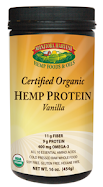
I have met many people in my days, including family members who suffer from lactose intolerance. Aka lactase deficiency. Lactose intolerance is an irritable little bugger that causes painful stomach cramps, gas & bloating thirty minutes to two hours after eating or drinking foods that contain lactose.
So where can you find Lactose? Basically in just about anything these days. It is found in milk of mammals, including cows, goats, and sheep. Foods that contain lactose include dairy products, such as cream, cheese, some yogurts, margarine, salad dressings, biscuits and chocolate and some breakfast cereals. It’s also added as filler in medications. Of all these, milk has the highest amount of lactose.
So what is lactose intolerance? It is the inability to metabolize lactose (a milk sugar) due to the absence of an enzyme in the digestive system which helps breaks down and absorbs lactose when consumed.
After eating/drinking something that contains lactose, it passes down the esophagus and goes into the stomach, where it is digested. The digested food then passes into the small intestine. Normally, the cells that line the small intestine produce an enzyme called lactase. The lactase enzyme breaks down the lactose into glucose and galactose (a type of sugar). They are then absorbed into the bloodstream. However, this is where people have problems. If the body does not produce the enzyme required to breakdown the lactose, the unprocessed portion moves through the digestive system into the large intestine where the normal intestinal bacteria interacts with it. This causes typical symptoms of lactose intolerance such as the ones mentioned above.
You might find this part interesting. Lactose intolerance ranges (in terms of %) by ethnicity and increases with age. Did you know that almost all Asians and Native Americans are lactose intolerant? And up to 80% of African Americans and Hispanic Americans? According to research, their ancestors did not eat dairy foods, so their bodies cannot digest dairy and their genes have been passed from generation to generation. For a detailed chart by ethnicity click here and scroll down.
Sad but true, there is no way to cure lactose intolerance. For most people, you can find relief by reducing the amount of dairy products you eat and using alternatives to dairy or substitutes. In every grocery store you will find it very easy to find “lactose free” products these days. You can also get milk that is made from soy, rice, oats, potatoes, almonds, peanut, hazelnut and even peas. Almond milk, made by Blue Diamond (unsweetened vanilla flavor) is one of my favorites and is very tasty. In addition yogurts, (containing live bacteria), sour cream, cottage cheese and hard cheeses (such as Edam and Cheddar) are all considered fermented dairy products that have been broken down by substances (yeast, bacteria, or other micro-organisms) and are easier to digest than fresh dairy products. So as you can see, there are many variations and alternatives to dairy that you can choose from.
So you are probably thinking that alternatives are great but what about the health benefits of eating dairy such as calcium, protein, vitamins A, B12, and D? Dairy also helps the body absorb magnesium and zinc. And you're right? Dairy products are essential for a healthy diet. Without these essential vitamins, calcium and minerals, this increase the risk of developing osteoporosis. So how might one go about getting the recommended daily intake of all this good stuff? It is important to eat other foods that contain the same vitamins, minerals and calcium as part of your daily diet such as:
• broccoli
• cabbage
• dried fruit
• sardines, salmon, and pilchards
• kale (a leafy green vegetable)
• nuts (almonds, brazil nuts, and sesame seed)
• soya beans
• soya drinks with added calcium
• tofu
You have probably heard of the word Probiotics with alternative medicine being at the forefront of discussion these days. Probiotics are live microorganisms that, when ingested, have beneficial effects on the prevention or treatment of disease. Probiotics have also been reported to help the body digest lactose, thereby alleviating malabsorptive symptoms from excessive lactose. It also helps with symptoms such as diarrhea, irritable bowel syndrome & inflammatory bowel disease.
So where can you find this fancy stuff? Well you don’t have to go very far. Probiotics are available as active or "live" cultures in some yogurts. Yogurts contain a lactase enzyme produced by the bacterial cultures used to make the yogurt. However, many commercial brands contain milk solids, increasing the lactose content so it’s important to look for yogurt that has live cultures.
Acidophilus (lactic acid bacteria) is a name given to a group of probiotics that breaks lactose in the intestine into short-chain fatty acids and other substances that can be absorbed by the colon. Acidophilus is available as a dietary supplement and found in the refrigerated section of health food stores.
The following are most often used for lactose intolerance:
• Lactobacillus acidophilus
• Lactobacillus bulgaricus
• Streptococcus salivarius
• Lactobacillus reuteri
• Lactobacillus plantarum
• Streptococcus thermophilus
For those finding it difficult to cut back on dairy, a lactase substitute (in pill or liquid form) is also available to replace the lactase that the body cannot produce. This can be effective in helping the digestive system to digest the lactose in the meal if you decide to have that ice cream you are craving for.
So now you have the low down on lactose intolerance. Perhaps “Skinny Bitch,” a book written by Rory Freedman was right. An amazing book might I add! You may never look at dairy the same way again and possibly never eat/drink it for a long time. The book discusses how research studies show that milk is the cause of acne, anemia, anxiety, ADD, allergies, asthma, obesity, heart disease, diabetes, autism, multiple cancers and of course lactose intolerance. Have you ever thought that maybe our bodies are not capable of breaking down dairy as we age? Study after study has shown that lactose intolerance increases as we get older. Should we continue to eat or drink dairy as adults especially that of a mammal? A good quote taken from "Skinny Bitch In The Kitchen" says, “just like human milk is for baby humans, cows’ milk is for baby cows. We’re the only species on the planet that drinks the milk of another species. We’re also the only species on the planet that drinks the milk as adults….There are so many awesome alternatives to dairy products. Get with the program, bitches.” (Kim Barnouin and Rory Freedman, 2007)
... And to this I conclude.
(Source)"Excerpt: Skinny Bitch In The Kitchen." MSNBC. 09 January 2008. March 2010. http://today.msnbc.msn.com/id/22553738/



.jpg)



No comments:
Post a Comment